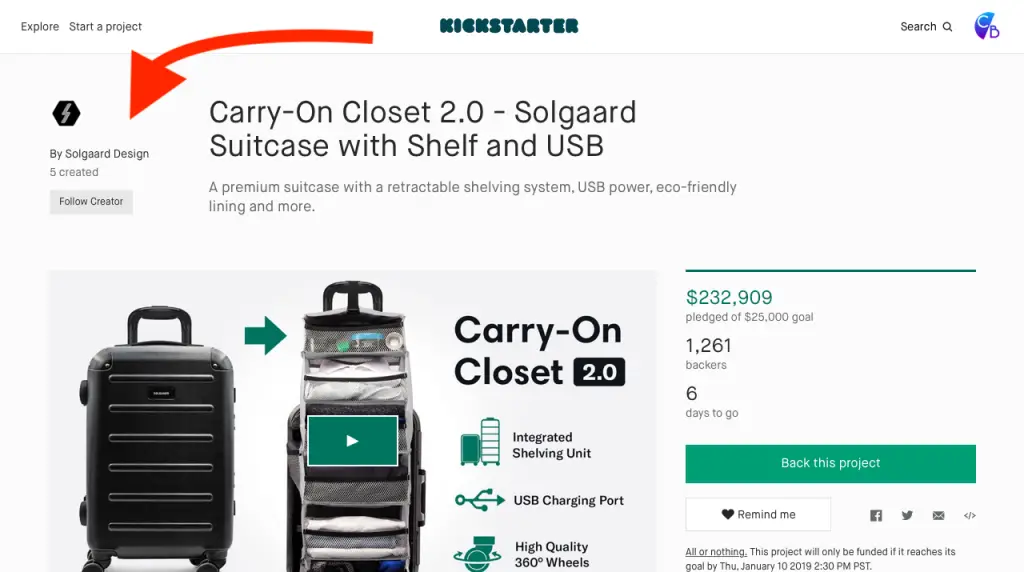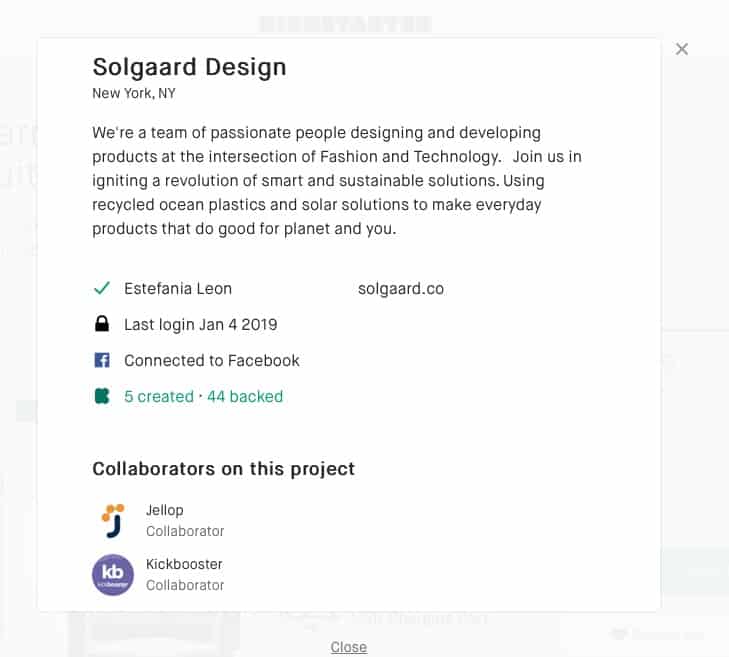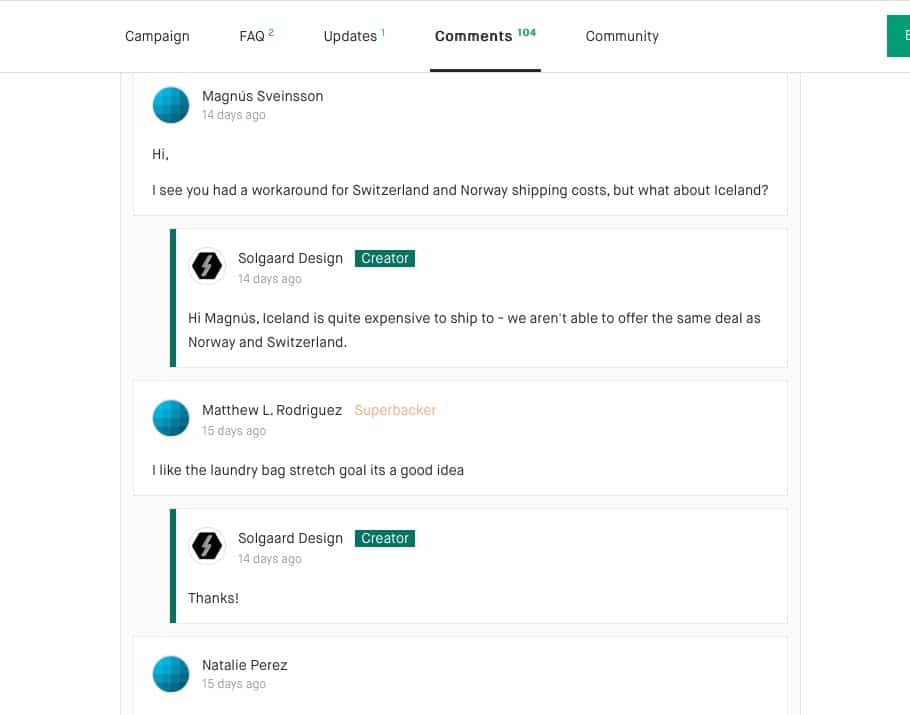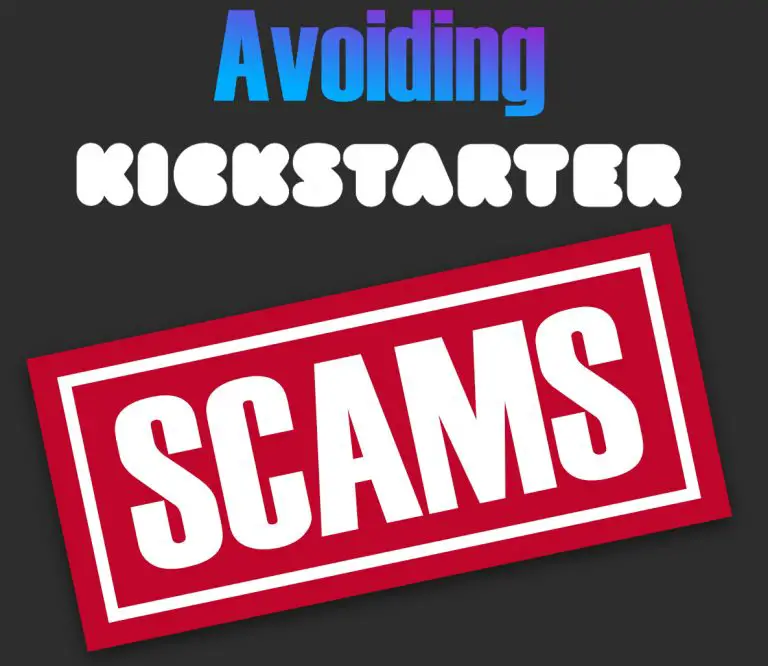Some of the most innovative products have started on Kickstarter and other crowdfunding platforms. In the past few years it’s become the first step for many amazing projects emerging on the market. The problem is that despite the many campaigns that dutifully follow through on their promises, there’s the occasional bad apple.
A malicious minority has used the platform to hype too-good-to-be-true ideas and then never delivered on their claims. Kickstarter has put policies in place to try to prevent this, but some campaigns still manage to take the money and run.
However, that shouldn’t stop you from supporting the many legitimate campaigns on Kickstarter. We’ve outlined some steps you can take to help from falling for a Kickstarter scam.
Check the creator
Some backers new to crowdfunding might think that Kickstarter handles all the fundraising, fulfillment and shipping. That definitely is not the case.
Kickstarter is simply a platform, and those responsibilities fall directly on the project creator from beginning to end. Just about anyone can launch a Kickstarter campaign, whether they’re an individual or a business, which is why it’s important to check out exactly who you’re pledging money to.

On the top left of every campaign is a link that shows the project creator info. What you want to see is as full a profile as possible, ideally with a history of other projects they’ve created.

For Solgaard Design, we can see the green checkmark next to their name, indicating that they’ve verified their identity through Kickstarter. That means they’ve uploaded a form of government ID that matches their records on file with Kickstarter. We can also see they’ve logged in recently – scammers often dump accounts routinely and don’t check in with backers.
Project track record
We can see from their profile that Solgaard Design has a history of successful projects. That’s not to say first time creators are any less legitimate, but a proven track record of projects that were carried through is one of the biggest indicators of a safe pledge.
Look for updates
When someone’s asking for thousands of dollars from strangers, the least they can do is respond to questions. A legitimate Kickstarter creator should be checking in every few days with updates on their progress or other comments.

The scariest thing to a backer is silence from the campaign owner. In business no news is NOT always good news, and backers want to see there are people steadily working towards sending them the product.
Search outside of Kickstarter
Legitimate Kickstarter creators are eager to show-off any press mentions or awards they’ve received. You’ll often see links on campaign pages to other media sites talking about their project. However, it’s important to make sure these mentions are legit, especially when there are awards mentioned.
Legitimate businesses that issue awards, whether they’re for product design or innovation, will usually list winners on their own website every year. A quick Google search will reveal if a campaign owner has won the awards they’ve claimed.


Searching the creator’s name or business is also a good idea. It can help verify they’re a real person and show whether their location matches the one given on Kickstarter. Many Kickstarter scams come from international groups using an address in the United States, so it’s important to make sure everything lines up with the info listed on Kickstarter.
Use common sense
Some things simply are too good to be true. If a campaign is promising something that multi-billion dollar corporations haven’t been able to produce, chances are a 5-person start-up can’t either.
Just because someone’s put together some photos of a piece of plastic they’re calling the “World’s smallest earbuds“, or “World’s thinnest phone” doesn’t mean they can make it a reality.
Spelling errors, botched grammar and unverified claims are all red flags you don’t want to see before handing over any cash. Photos should show an actual item or prototype, NOT renderings or mockups of what something might look like.
Realistic expectations
A legitimate Kickstarter campaign should have realistic goals for what they plan to accomplish. If someone has a $500,000 goal for a board game or enamel pin set, something’s not right.
Many creators will choose to have lower funding goals than their true costs will actually be. This is a marketing tactic based on the assumption more people will pledge when the funding goal is within reach. This strategy works a lot of the time, but the same common sense rules apply…
If someone’s goal is $1,000 to develop an electric bike that fits in a backpack, chances are you won’t be receiving one any time soon.
Report it
If worse comes to worse the best thing you can do is report a project to Kickstarter. They have a reputation for being somewhat magnanimous with funded projects, but you can help alert other backers at places like KickScammed.com.
Careful consideration and due diligence are key to avoiding any scam, whether on Kickstarter or elsewhere. The more campaigns you back the better of a sense you’ll build for recognizing legitimate projects. Any doubts you have should always be brought up with the creator.
Have you ever been scammed by a Kickstarter project? Let us know in the comments.

